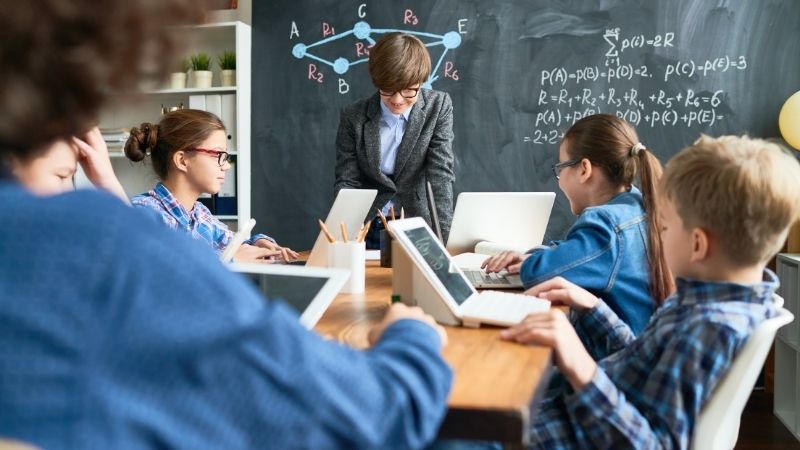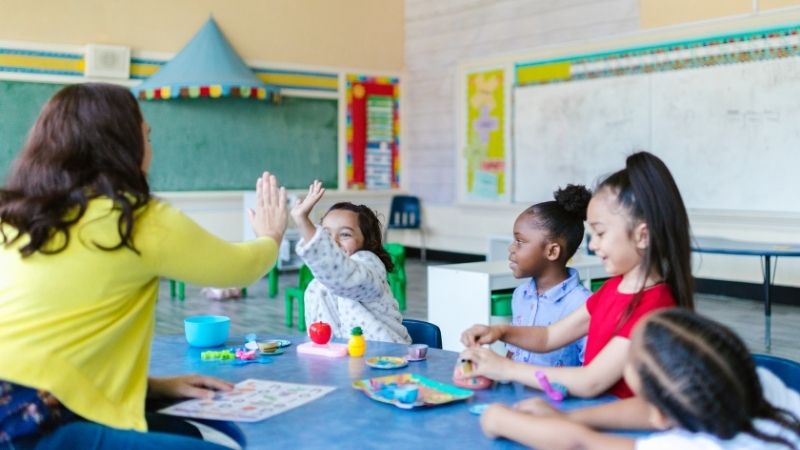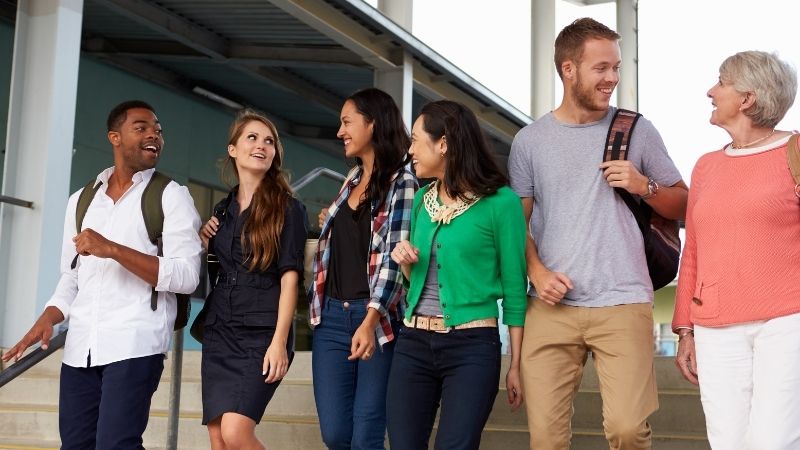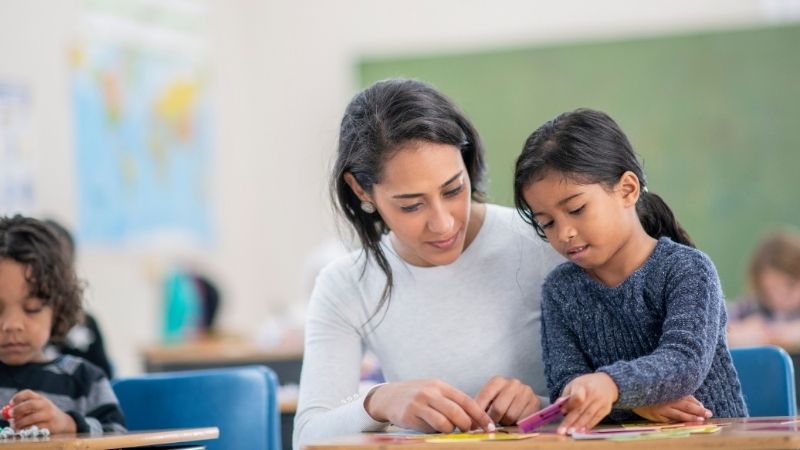
Special education classrooms are dynamic environments that require careful consideration of various elements to create an inclusive learning environment. This comprehensive guide aims to explore setups, facilities, classroom layouts, essential equipment, and the efficacy of teaching aids in special education classrooms.
By examining these factors, educators and stakeholders can gain a thorough understanding of how to optimize classroom dynamics and foster effective learning experiences for students with diverse needs.
This article provides valuable insights into the multifaceted nature of special education classrooms while maintaining an objective and empirical approach.
Key Takeaways
- Sensory integration activities and sensory equipment play a crucial role in improving attention, focus, and engagement in special education classrooms.
- The use of assistive technology, such as speech-to-text software and communication boards, facilitates learning for students with disabilities and promotes independence and self-confidence.
- Flexible seating options, clear visual cues, and ample storage space are essential elements in designing effective classroom layouts and providing a supportive learning environment.
- Peer collaboration and the use of communication aids, such as augmentative and alternative communication devices and visual supports, contribute to creating an inclusive learning environment and fostering positive relationships among students.
The Importance of Proper Setups in Special Education Classrooms
Proper setups in special education classrooms play a crucial role in facilitating effective teaching and learning experiences for students with diverse needs. The role of sensory integration is paramount in these settings as it helps students regulate their sensory inputs, leading to improved attention, focus, and overall engagement in the classroom. Sensory integration activities such as using sensory bins, providing alternative seating options, or incorporating movement breaks can greatly enhance the learning environment for students with sensory processing difficulties.
Additionally, strategies for promoting social-emotional development are equally important in special education classrooms. Creating a supportive and inclusive classroom culture that fosters positive relationships among peers can significantly impact students' emotional well-being and academic success. Teachers can implement strategies like cooperative learning activities, social skills training programs, and structured group discussions to promote social interaction and emotional growth.
Exploring the Facilities in Special Education Classrooms
Appropriate facilities within special education settings encompass a range of features and resources that support the diverse needs of students. One such feature is sensory integration, which involves creating an environment that promotes sensory exploration and regulation for students with sensory processing difficulties. This can include designated sensory rooms or areas equipped with various tactile, visual, auditory, and olfactory stimuli to engage and calm students.
Additionally, assistive technology plays a crucial role in facilitating learning for students with disabilities. This may include devices such as speech-to-text software, communication boards or devices, adapted keyboards or mice, and specialized computer programs.

Designing Effective Classroom Layouts for Special Education Students
Effective classroom layouts for special education students involve careful consideration of the arrangement and organization of furniture, materials, and resources to optimize their learning environment. A well-designed layout can enhance accessibility, promote engagement, and support individualized instruction techniques. Incorporating assistive technology is crucial in creating an inclusive and supportive classroom environment for students with diverse needs.
Here are five key elements to consider when designing effective classroom layouts for special education students:
- Flexible seating options that accommodate different physical needs and preferences.
- Clear visual cues and signage to aid in wayfinding and organization.
- Ample storage space for specialized equipment, materials, and assistive devices.
- Collaborative work areas that foster peer interaction and cooperation.
- Accessible technology stations equipped with adaptive software or devices.
Essential Pieces of Equipment for Special Education Classrooms
Adaptive technology benefits, sensory equipment effectiveness, and the importance of communication aids are key points to consider in special education classrooms.
Adaptive technology can provide students with disabilities the tools they need to access information and participate fully in classroom activities.
Sensory equipment, such as weighted blankets or fidget toys, can help regulate sensory input for students with sensory processing issues.
Communication aids, such as augmentative and alternative communication systems, play a crucial role in facilitating effective communication for nonverbal or minimally verbal students.
Adaptive Technology Benefits
The integration of adaptive technology in special education classrooms offers students with disabilities the opportunity to enhance their learning experience through customized tools and resources. This technology allows for individualized instruction based on each student's unique needs, empowering them to actively participate in the learning process.

Some key benefits of adaptive technology applications are:
- Increased access to information and educational materials
- Enhanced communication skills through alternative communication methods
- Improved independence and self-confidence
- Personalized learning experiences tailored to individual strengths and challenges
- Facilitation of inclusion and participation in mainstream classroom activities
Sensory Equipment Effectiveness
The integration of sensory equipment in special education classrooms is crucial for promoting engagement and creating an inclusive learning environment. Sensory tools such as weighted blankets, therapy balls, and fidget toys can be highly effective in addressing the sensory needs of students with diverse abilities. These tools provide tactile stimulation, proprioceptive input, and opportunities for self-regulation, which can enhance focus and attention span. Additionally, sensory equipment can help reduce anxiety and promote relaxation among students who may experience sensory sensitivities or overload.
To ensure the efficacy of these tools, it is important to consider individual student preferences and needs when selecting and introducing sensory equipment into the classroom. Teachers should collaborate with occupational therapists to determine appropriate strategies for integrating these tools into instructional activities. Furthermore, providing clear guidelines on their proper use and maintenance will facilitate their effective utilization by both students and educators.
Communication Aids Importance?
Communication aids play a crucial role in facilitating effective communication and promoting the inclusion of students with diverse abilities in educational settings. These aids not only support students with speech and language difficulties but also provide alternative communication methods for individuals who are nonverbal or have limited verbal abilities.
The benefits of using assistive technology in communication include improved social interaction, increased participation in classroom activities, enhanced comprehension and expression of ideas, and greater independence.
Some common types of communication aids used in special education classrooms are:
- Augmentative and alternative communication (AAC) devices
- Visual supports such as picture schedules and visual timetables
- Communication boards or books
- Sign language interpreters or sign systems
- Speech-generating devices
Understanding the Efficacy of Different Teaching Aids in Special Education
One important aspect to consider in special education classrooms is evaluating the effectiveness of various teaching aids. Adaptive technology benefits students with disabilities by providing them with tools that support their learning and communication needs. These aids can range from specialized software programs to assistive devices, such as speech-generating devices or alternative keyboards.

Additionally, sensory equipment plays a crucial role in catering to the diverse sensory needs of students with disabilities. Sensory integration equipment, such as weighted vests or sensory cushions, can help regulate sensory input and promote focus and attention during learning activities.
The efficacy of different teaching aids varies depending on individual student needs and preferences. Therefore, it is essential for educators to assess each student's unique requirements and consider the potential benefits of adaptive technology and sensory equipment when designing instruction in special education classrooms.
Creating an Inclusive Learning Environment in Special Education Classrooms
Peer collaboration benefits and effective communication strategies are crucial elements in creating an inclusive learning environment in special education classrooms.
By fostering peer collaboration, students with special needs can learn from their peers, develop social skills, and enhance their overall academic performance.
Implementing effective communication strategies such as visual aids, clear instructions, and active listening techniques can further support students' understanding, participation, and engagement in the classroom.
Peer Collaboration Benefits
Collaborative learning in special education classrooms has been shown to offer numerous benefits, including increased social skills development, improved academic performance, and enhanced problem-solving abilities.
- Promotes peer interaction and cooperation, fostering positive relationships among students.
- Encourages active engagement in the learning process through shared responsibilities and tasks.
- Cultivates a sense of belonging and community within the classroom environment.
- Enhances communication skills by providing opportunities for students to express their thoughts and ideas with their peers.
- Supports the development of empathy and understanding towards others' perspectives.
Effective Communication Strategies?
Effective communication strategies play a crucial role in facilitating meaningful interactions and fostering a supportive learning environment within special education classrooms. These strategies are vital for both teachers and students to effectively convey information, express needs, and build relationships.

Teachers can utilize various techniques to enhance communication, such as visual aids, sign language interpreters, picture schedules, and alternative augmentative communication devices. Effective teaching techniques include providing clear instructions, using visual supports to reinforce verbal messages, encouraging active listening, and utilizing assistive technology to bridge communication gaps.
By implementing these strategies, educators can ensure that all students have equal access to information and opportunities for participation in the classroom. Furthermore, effective communication fosters collaboration among students with diverse abilities and backgrounds.
Transition: In addition to effective communication strategies...
Best Practices for Optimizing Special Education Classroom Dynamics
Promoting a positive and inclusive environment can enhance the dynamics of special education classrooms. In order to optimize classroom dynamics, it is important to implement best communication strategies and encourage peer collaboration. Here are some practices that can contribute to an effective and harmonious learning environment:
- Implementing clear and consistent communication systems such as visual cues, sign language, or assistive technology.
- Providing opportunities for peer collaboration through group projects, cooperative learning activities, or paired discussions.
- Utilizing inclusive teaching methods that cater to diverse learning styles and abilities.
- Encouraging open dialogue between students, teachers, and parents to foster a sense of trust and understanding.
- Incorporating social-emotional learning activities that promote empathy, self-awareness, and respect among students.
Frequently Asked Questions
How Can the Proper Setups in Special Education Classrooms Enhance the Learning Experience for Students?
Proper setups in special education classrooms can enhance the learning experience for students by providing an environment that supports their unique needs. The importance of setups lies in creating a conducive space that promotes engagement, accessibility, and inclusivity.
What Are Some Examples of Facilities That Are Commonly Found in Special Education Classrooms?
Examples of facilities commonly found in special education classrooms include sensory rooms, therapy rooms, assistive technology stations, and specialized equipment such as adaptive seating and communication devices. These facilities provide essential support for students with diverse needs, enhancing their learning experience.
How Does the Classroom Layout Impact the Engagement and Participation of Special Education Students?
The classroom layout plays a crucial role in shaping the classroom environment for special education students, impacting their engagement and participation. A well-designed layout with appropriate seating arrangements and clear visibility can enhance student engagement and facilitate active participation in learning activities.

What Are Some Essential Pieces of Equipment That Should Be Available in Special Education Classrooms?
Inclusive equipment and adaptive technology are essential in special education classrooms. These tools enable students with disabilities to actively participate, engage, and access the curriculum. Their availability promotes inclusivity and empowers students to reach their full potential.
How Can Different Teaching Aids Be Used Effectively to Support the Learning Needs of Special Education Students?
Differentiated instruction and assistive technology are two important tools for supporting the learning needs of special education students. By tailoring instruction to meet individual needs and providing appropriate technological aids, educators can enhance the efficacy of teaching in special education classrooms.
 Careers in EducationElementary EducationHigh School EducationEducational TechnologyTeaching StrategiesSpecial EducationPrivacy PolicyTerms And Conditions
Careers in EducationElementary EducationHigh School EducationEducational TechnologyTeaching StrategiesSpecial EducationPrivacy PolicyTerms And Conditions
